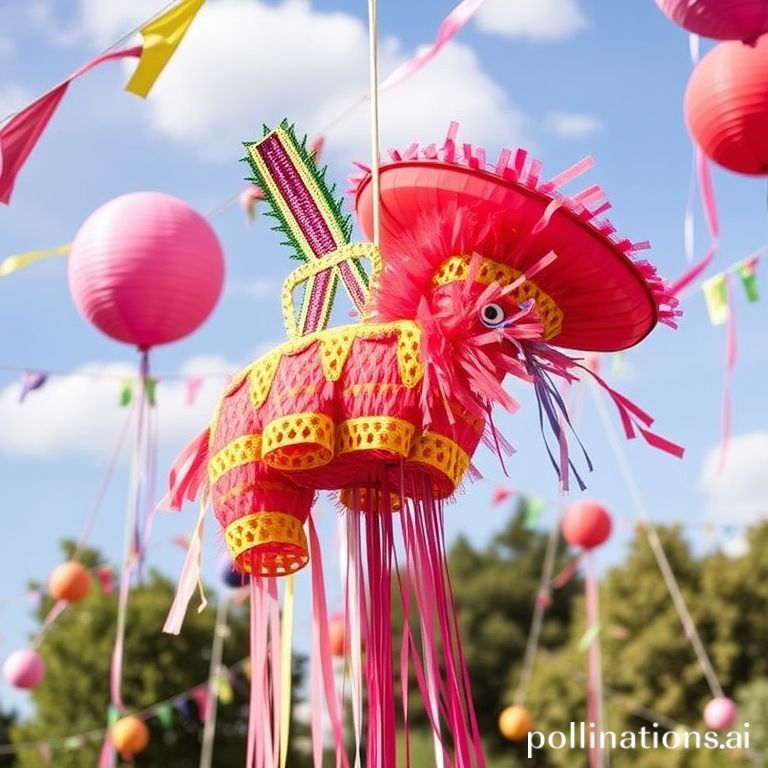The vibrant and joyful piñata, a staple at Mexican celebrations, is much more than just a fun game for children. It’s a cultural icon steeped in history, symbolism, and tradition. From its origins to its modern-day form, the piñata represents a fascinating blend of indigenous beliefs, religious teachings, and festive spirit.
Understanding the significance of piñatas in Mexican culture requires delving into its rich past and exploring the deeper meanings behind its colorful exterior. It’s a journey that reveals the piñata as a powerful representation of faith, hope, and the triumph of good over evil.
The History and Evolution of the Piñata
The exact origins of the piñata are debated, but many believe it evolved from similar traditions in both Europe and pre-Columbian Mesoamerica. In Europe, a clay container decorated with ribbons and paper was used during Lent. In Mesoamerica, the Aztecs had a similar ritual honoring the god Huitzilopochtli, where a clay pot filled with treasures was broken as an offering.
When Spanish missionaries arrived in Mexico, they cleverly adapted these traditions to teach religious concepts to the indigenous population. The piñata became a tool for evangelization, with each element carrying symbolic meaning.
The Symbolic Meaning
- The clay pot represented Satan or evil.
- The seven points (traditionally) on the star-shaped piñata symbolized the seven deadly sins.
- The blindfold represented faith.
- The stick symbolized the will to overcome temptation and evil.
- The candy and fruit inside represented the rewards of righteousness and faith.
Piñatas in Modern Mexican Celebrations
While the religious symbolism is still recognized, the piñata has largely become a secular tradition, a beloved part of birthdays, Christmas celebrations (Las Posadas), and other festive occasions. The designs have also evolved, moving beyond the traditional star shape to incorporate popular cartoon characters, animals, and other creative forms.
Today, the piñata-breaking ceremony is a joyous event filled with laughter and excitement. Children (and sometimes adults!) take turns hitting the piñata with a stick while blindfolded, trying to break it open and release the treats inside. The ensuing scramble for candy is a highlight of any party, representing the abundance and blessings that come with perseverance and good fortune.
How Piñatas are Made
Traditionally, piñatas are made from a clay pot covered in layers of colorful paper maché. The process involves shaping the pot, applying wet paper strips, and then decorating it with vibrant crepe paper, paints, and other embellishments. While clay pots are still used, cardboard and wire frames are also common today, allowing for more intricate and durable designs. You can often find local artisans selling handmade piñatas in markets throughout Mexico.
The Social Significance
Beyond the fun and games, piñatas foster a sense of community and shared joy. The collective effort to break the piñata, the shared excitement of the candy shower, and the laughter that fills the air create lasting memories and strengthen social bonds. It’s a tradition that brings people together, regardless of age or background, to celebrate life and good fortune.
Conclusion
The piñata, with its vibrant colors, sweet surprises, and historical roots, holds a significant place in Mexican culture. It embodies a unique blend of religious symbolism and festive tradition, representing the triumph of good over evil, the rewards of faith, and the joy of community. Whether at a birthday party or a Christmas celebration, the piñata continues to be a cherished symbol of Mexican identity and a source of laughter and delight for generations to come.
If you enjoyed this article, don’t forget to explore more inspiring stories on Life in Mexico!
IMAGE: A brightly colored star-shaped piñata hangs suspended in a sunny courtyard in Mexico. Children with blindfolds are taking turns swinging a stick, trying to break it open. Candy spills out as it cracks, and the children laugh and reach for the treats. The scene is filled with vibrant colors, joy, and a sense of celebration. The style is realistic and captures the essence of a traditional Mexican party.


